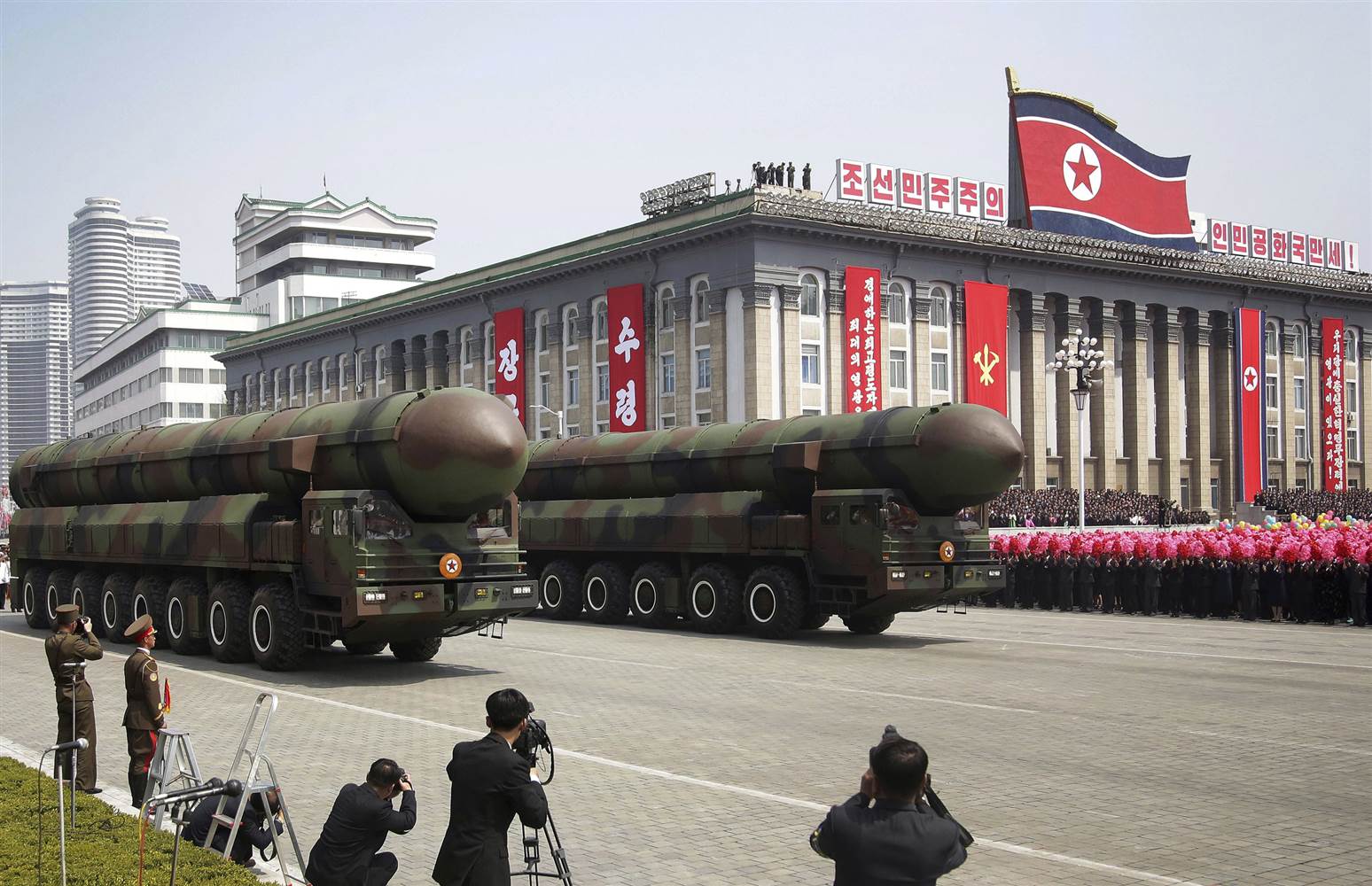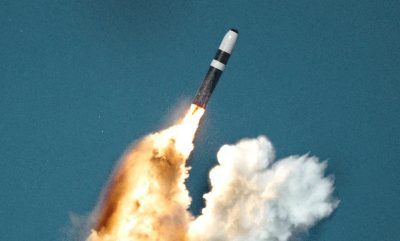The Current Nuclear Threat – Part 1
by John M., Survival Blog:

Mutually assured destruction. This phrase has long helped prevent direct armed conflict between Russia and the United States. Although many proxy wars have been fought over the past 70 years, since the Soviet Union developed nuclear weapons, both sides have been careful not to start a direct conflict that could escalate toward a nuclear exchange.
During the Cold War, there were many moments that brought us close to nuclear war. During the Cuban Missile Crisis in 1962, the world held their breath as the U.S. faced off with the Soviets over their attempt to place nuclear weapons in Cuba. Many other events taht brought us close to war were less known, publicly. They were kept classified until 25 years later. One such event was in 1979, when a training tape was accidentally loaded to NORAD computers, leading to the military believing that a launch had occurred. Another event in 1983 involved a Soviet satellite error that misidentified five missile launches from the U.S. Many other accidents have occurred, some which have been made public, and others which have been kept secret.
When the Cold War ended in the early 1990s, the world abreathed a collective sigh of relief. The only remaining fear was that a former Soviet state might lose control of nuclear weapons that still remained in their new countries. But the past few years have reawakened fears of nuclear exchanges with Russia or other nations.
Soon after the U.S. developed nuclear fission bomb weapons, the Soviet Union also developed similar weapons. [JWR Adds: Their technological leapfrogging was based on Manhattan Project technical data provided by American spies Julius and Ethel Rosenberg.] The United Kingdom, France, and China all soon had weapons of their own. The United Nations helped promote the Treaty on the Non-Proliferation of Nuclear Weapons (NPT) between 1965 and 1968. However, after the signing of the NPT, Pakistan, India, and, most recently, North Korea developed their own nuclear weapons. Israel has maintained a status of deliberate ambiguity as to whether or not they have nuclear weapons. Despite the NPT, Iran has also had a program, but has not yet produced nuclear weapons. Other fears remain as to whether rogue actors, such as terrorists or other nations, might acquire weapons and use them.
Despite recent fears, it is unlikely that Russia or China would directly attack the United States or their allies with nuclear weapons. Despite great reductions in nuclear weapons since the 1980s, the threat of mutually assured destruction remains a sufficient deterrent. Pakistan and India are primarily only a threat to each other. Israel has nuclear weapons only as a deterrent against their neighbors, such as Iran, to prevent them from making a full-scale attack.
NORTH KOREA ADDED TO THE MIX
North Korea’s recent acquisition and testing of nuclear weapons and missiles to deliver such weapons has become a great concern of the United States. Kim Jong-Un has made numerous threats. Historically, these threats have been part of an effort to obtain concessions and aid from the United States. North Korea has struggled to feed their people and threats have brought concessions in order to maintain peace.
While President Donald Trump was not open to giving aid directly to North Korea, he was able to open negotiations with Kim Jong-Un, the first negotiations between the two countries’ presidents since the cessation of fighting in the Korean War. While these peace talks initially ended North Korea’s nuclear testing, they have not yet ended their nuclear program entirely. Most of North Korea’s weapons have not yet proven reliable enough for full scale operations. North Korea’s arsenal might only harm the United States, but the U.S. would surely annihilate North Korea in retaliation if they ever attempted an attack on the U.S. or their allies.
So, what fears of nuclear weapons remain? Clearly, the threat of an open nuclear exchange between the U.S. and Russia or China remains, but it is unlikely. So the most likely threats remain from North Korea, Iran, or terrorist organizations.
NORTH KOREA, SCENARIO 1
Since the division of the Korean Peninsula in 1945 and the subsequent Korean War, there has long been a desire on both sides to see an eventual reunification. U.S. troops stationed in South Korea have helped to discourage any potential invasions from the north. Since the end of the Korean War Conflict in 1953, there have been various skirmishes back and forth across the Demilitarized Zone (DMZ), which was established with the armistice. Contrary to common understanding, the Korean War did not actually end with a treaty, but is only under an armistice that declared a cease-fire. Technically, the war has not ended, only the fighting.
If Kim Jong-Un wanted to push for a reunification under North Korean rule, implemented by a invasion of South Korea, nuclear weapons could give him the advantage to do so. Such an engagement would be risky, likely causing massive casualties in his own country. But nuclear weapons are likely the only way he could make such a move. This outlines a possible scenario.
Their first step would involve launching a strike against the continental United States. This would require only a couple of well-placed missiles into the upper atmosphere, causing an electro-magnetic pulse (EMP) that would bring down the U.S. electrical grids. This would not initially cause massive casualties, although many who are dependent on medical life-support systems would die quickly. However, as has been discussed in many EMP scenarios, there would follow several massive die-off events within the U.S., leading to an estimated death of 90% of the population within a year. This attack would cripple the United States and much of the military would be occupied with recovery efforts at home.
U.S. retaliation would likely be swift, so the next steps would have to occur in rapid succession after the EMP strike to employ North Korean forces before they were destroyed by U.S. bombers and missiles. One option would be to get protection from China or Russia, which will be discussed in the next section. But, acting on their own, North Korea would have to also launch successive attacks on U.S. bases in Japan and South Korea, in order to eliminate the possibility of counter-attack as quickly as possible. Additionally, an attack on Seoul and Tokyo would cripple those two countries’ leadership, allowing North Korean troops to begin ground attacks on South Korea.
The successive attacks on U.S. bases would have to be done immediately, probably before the initial launch against the continental U.S. had detonated, or shortly thereafter. This strike would also have to include bases such as Guam and bases in Hawaii. Timing so that all strikes occurred simultaneously would be most effective, but difficult, depending on North Korea’s level of technology.
The ground and naval invasions of South Korea would have to be timed so that they begin before the dust settles from the initial strikes. Too soon, and North Korean troops are at risk of being destroyed by their own weapons. Too late and they risk annihilation from U.S. retaliatory strikes.
Without a major military resistance, North Korean troops would be able to push south and take the entire peninsula. A strike on Seoul, either in the form of a a high altitude EMP airburst or a groundburst nuclear strike, would leave South Korea leaderless and ripe for a takeover.
President Kim would have to take immediate shelter and allow his troops to carry out their invasion without his direction. He would need a hidden bunker where he could remain until all U.S. strikes ceased. Once this all happened, he would then be able to re-emerge and resume control.
Loading...



